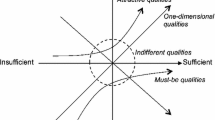Abstract
Task allocation is one of the most important activities in the process of collaborative customized product development. At present, how to allocate the collaborative development tasks scientifically and rationally becomes one of the hot research issues in the field of product development. Although many scholars in academia has made a significant contribution to the problem of task allocation and achieved many useful results, the research work of collaborative development task allocation for product customization is still lacking. Therefore, in view of the insufficient consideration on task fitness and task coordination for task allocation in collaborative customized product development at present, research work in this paper is conducted based on the analysis of collaborative customized product development process and task allocation strategy. The definition and calculation formula of task fitness and task coordination efficiency are given firstly, then the multi-objective optimization model of product customization task allocation is constructed and the solving method based on the model of double-population adaptive genetic algorithm is proposed. Finally, the feasibility and the effectiveness of task allocation algorithm are tested and verified by the example of a 5MW wind turbine product development project.











Similar content being viewed by others
References
Adzakpa, K. P., Adjallah, K. H., & Yalaoui, F. (2004). On-line maintenance job scheduling and assignment to resources in distributed systems by heuristic-based optimization. Journal of Intelligent Manufacturing, 15(2), 131–140.
Anussornnitisarn, P., Peralta, J., & Nof, S. Y. (2002). Time-out protocol for task allocation in multi-agent systems. Journal of Intelligent Manufacturing, 13(6), 511–522.
Choy, K. L., & Lee, W. B. (2003). A generic supplier management tool for outsourcing manufacturing. Supply Chain Management: An International Journal, 8(2), 140–154.
Dash, R. K., Vytelingum, P., Rogers, A., David, E., & Jennings, N. R. (2007). Market-based task allocation mechanisms for limited-capacity suppliers. IEEE Transactions on Systems, Man and Cybernetics, Part A: Systems and Humans, 37(3), 391–405.
Fernandez, W., & Lamari, D. M. (2003). The task allocation problem with constant communication. Discrete Applied Mathematics, 131(1), 169–177.
Gerkey, B. P. (2003). On multi-robot task allocation. PHD Dissertation, University of Southern California.
Hasgül, S., Saricicek, I., Ozkan, M., & Parlaktuna, O. (2009). Project-oriented task scheduling for mobile robot team. Journal of Intelligent Manufacturing, 20(2), 151–158.
Jain, V., Kundu, A., Chan, F. T., & Patel, M. (2013). A Chaotic Bee Colony approach for supplier selection-order allocation with different discounting policies in a coopetitive multi-echelon supply chain. Journal of Intelligent Manufacturing, 24(6), 1–14.
Lei, Y. J., Zhang, S. W., Li, X. W., & Zhou, C. M. (2005). Genetic algorithm toolbox and applications. Xi’an: Xi’an University of Electronic Science and Technology Press.
Liang, C., Guo, J., & Yang, Y. (2011). Multi-objective hybrid genetic algorithm for quay crane dynamic assignment in berth allocation planning. Journal of Intelligent Manufacturing, 22(3), 471–479.
Liu, L. (2010). Research on two-objective JSSP based on bouble-population genetic algorithm. Master Thesis, Northeastern University.
Min-Hyuk, K., Sang-Phil, K., & Seokcheon, L. (2012). Social-welfare based task allocation for multi-robot systems with resource constraints. Computers & Industrial Engineering, 63(4), 994–1002.
Öztürk, S., & Kuzucuoğlu, A. E. (2014). Optimal bid valuation using path finding for multi-robot task allocation. Journal of Intelligent Manufacturing, 25(2), 1–14.
Shuai, D. X., Shuai, Q., & Dong, Y. M. (2007). Particle model to optimize resource allocation and task assignment. Information Systems, 32(7), 987–995.
Smith, R. P., & Eppinger, S. D. (1997). A predictive model of sequential iteration in engineering design. Management Science, 43(8), 1104–1120.
Son, J. H., Oh, S. K., Choi, K. H., Lee, Y. J., & Kim, M. H. (2003). GM-WTA: An efficient workflow task allocation method in a distributed execution environment. Journal of Systems and Software, 67(3), 165–179.
Tripathi, A., Tiwaril, M., & Chan, F. (2005). Multi-agent-based approach to solve part selection and task allocation problem in flexible manufacturing systems. International Journal of Production Research, 43(7), 1313–1335.
Wunhwa, C., & Chinshien, L. (2000). A hybrid heuristic to solve a task allocation problem. Computers & Operations Research, 27(3), 287–303.
Yin, P. Y., Yu, S. S., Wang, P. P., & Wang, Y. T. (2007). Multi-objective task allocation in distributed computing systems by hybrid particle swarm optimization. Applied Mathematics and Computation, 184(2), 407–420.
Acknowledgments
This research is funded by the National Nature Science Foundation of China (No. 71071173), joint supported by Research Fund for the Doctoral Program of Higher Education of China (20090191110004),MOE (Ministry of Education in China) Project of Humanities and Social Sciences (Project No. 13XJC630011), Ministry of Education research fund for the Doctoral program of higher education (No. 20120184120040), Central University Science Research Foundation of China (No. K5051306006) and the teacher innovation project of Xidian University (No. K5051306013).
Author information
Authors and Affiliations
Corresponding author
Rights and permissions
About this article
Cite this article
Bao, B., Yang, Y., Chen, Q. et al. Task allocation optimization in collaborative customized product development based on double-population adaptive genetic algorithm. J Intell Manuf 27, 1097–1110 (2016). https://doi.org/10.1007/s10845-014-0937-0
Received:
Accepted:
Published:
Issue Date:
DOI: https://doi.org/10.1007/s10845-014-0937-0




